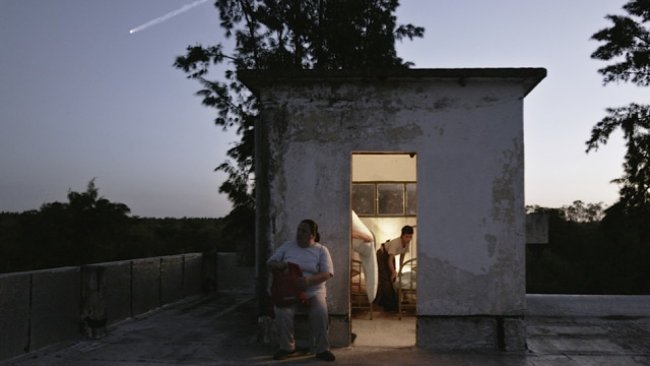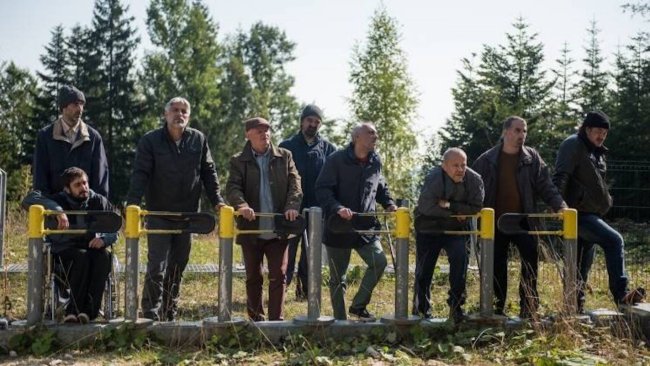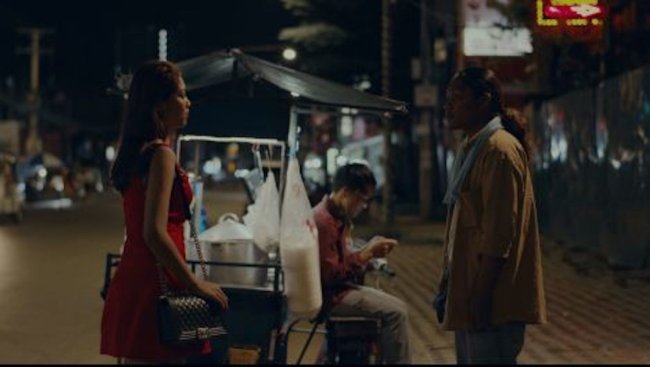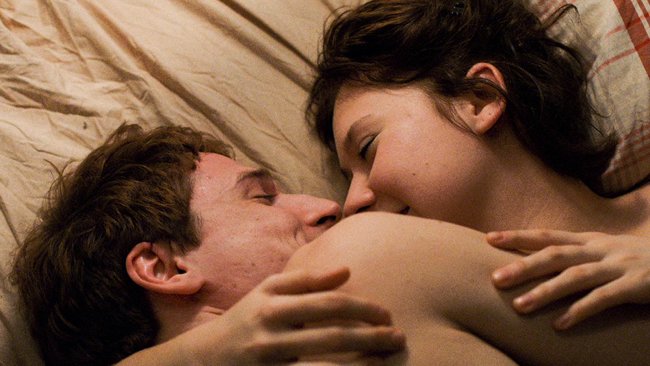Blind Willow, Sleeping Woman
[…] The antidote, at least for Földes, seems to be embracing imagination, as in overcoming fear of what is possible (the life we might have, the people we might become, etc).
[…] «As an artist I can’t imagine doing anything without creating my own technique».
Text: PM Cicchetti

There's something porous about Murakami's style. Through the sparse prose, beneath the twiggy, carefully laid words, vast mysterious worlds gleam. The moorings of narrative tend to dissolve, as details and gestures turn enigmatic, darkly resonant. In the short stories that make up Blind Willow, Sleeping Woman (2006), a stylistic friction is established, between visible surfaces and inner substance, between the familiar and the surreal. The stylistic setup matches a thematic preoccupation, a roughly Bergsonian take on modern urban life, one in which trivial everyday interactions overlay inscrutable depths of meaning.
The same thematic kernel informs Pierre Földes’ animated adaptation, which strings together short stories drawn from three different Murakami collections: the titular Blind Willow, Sleeping Woman; After the Quake and The Elephant Vanishes. The plot criss-crosses three main characters, all of them Tokyoites trapped in hollowed-out existences and seeking a new, more authentic sense of themselves. Földes sets the overarching narrative in the aftermath of the 2011 Tōhoku earthquake, which allows him to populate both the background of the city and the subconscious of his characters with news reports of people trapped alive under the rubble. The metaphorical intent here is a little on the nose (especially when compared to Murakami’s own, much subtler symbolic texture), but the animation redeems itself by adopting different visual registers for different layers of mise-en-scene, reserving an elegant though anodyne ligne claire for the everyday “surface” sequences, and descending into an expressionist gnarl of lines for the oneiric/hallucinatory bits, which have something of a Twombly-on-acid quality to them.
It must be said that, in spite of the specific reference to the 2011 quake, Földes does not interpret the split between outer appearance and inner truth through a particularly historical lens: the interior world here is primarily a space where one is afraid (afraid to face loneliness, for one thing, or life in general) as opposed to, say, alienated or reified in a larger socio-systemic way. The antidote - at least for Földes - seems to be embracing imagination, as in overcoming the fear of what is possible (the life we might have, the people we might become, etc).
One might be forgiven for thinking that, as far as insights into the human condition go, this particular rendition of modern urban life sways dangerously close to the lane occupied by self-help books. At best, it’s a trope long-established in literature (even if we just stick to short stories, Pirandello’s Il treno ha fischiato dates back to 1914), but I suppose what matters more (critically) is the peculiar intersection of techne and aesthetic assumptions at work in the project.
I wrote elsewhere that animation is the reserve of a dying race of artisans, solitary monks of the moving image who commit years of their life to the craft. Földes, the son of a sculptor who wanted to be a painter, became a musician and seems now to be making films as an accident, seems to be cut from a slightly different cloth. Less of a medieval amanuensis and more of a Renaissance Jack-of-all-trades, this polymath artist exudes a sort of naive confidence in his own powers of expression: a mixture of skills and “inspiration” appears to guide his practice.
While the 3D models are made for efficiency and expediency, the three-step process from storyboard to 2D animation achieved a careful stratification of crafts, allowing Földes, the live performers and the animators to combine and compound their unique expressive resources.
«As an artist I can’t imagine doing anything without creating my own technique», he glosses in an interview, and process itself deserves scrutiny here. Blind Willow, Sleeping Woman is less a straightforward adaptation than it is a layered re-mediation. The process behind it reveals a combination of cost-cutting choices and conscious attempts to retain as many distinct layers of artistry as possible. For example, after the initial story-board and animatic, which he drew and scored based on his own impressions of Murakami’s text, Földes cast live actors to perform the script. The footage then served as reference for the animators, who used it alongside computer-generated 3D models. While the 3D models are made for efficiency and expediency, the three-step process from storyboard to 2D animation achieved a careful stratification of crafts, allowing Földes, the live performers and the animators to combine and compound their unique expressive resources.
Földes’ faith in animation is, I suspect, a by-product of his faith in artistry as an intersubjective process, a combination of unique individualities and practices.
The most intriguing part of this composite pursuit, however, is the choice of animation itself. There’s an aesthetic paradox here: the animated image is chosen not for the higher degree of control it affords to its maker, but precisely for its somewhat mysterious ability to register whatever obscure, unquantifiable something is gained through the chain of mediation. In other words, animation is seen here as a recording medium, though unlike its photographic counterpart its recording powers are aimed firmly at the artist. Földes’ faith in animation is, I suspect, a by-product of his faith in artistry as an intersubjective process, a combination of unique individualities and practices. Adapting, here, means filtering someone’s poetics through other artists’ sensibility, sensorium and skills, then sitting back, and seeing what comes out the other end.
Whether all of this in the end works remains, of course, a legitimate critical question (some bits do, some don’t), but in the face of the ruling CGI orthodoxy and the upcoming AI-takeover in commercial animation, this simple act of faith in the inscrutable quality of human artistry is all the more captivating as it is untimely.
This article contains a third-party video. If you would like to watch the video, please adjust your settings.
Watch
Screenings at Festival Fantoche Baden 2023
Info
Blind Willow, Sleeping Woman | Film | Pierre Földes | FR-LUX-CAN-NL 2022 | 108’ | Festival Fantoche Baden 2023
First published: September 10, 2023



